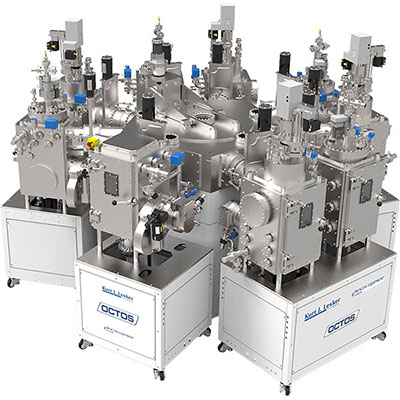Zirconium (Zr) Sputtering Targets Overview
Our comprehensive offering of sputtering targets, evaporation sources and other deposition materials is listed by material throughout the website. Below you will find budgetary pricing for sputtering targets and deposition materials per your requirements. Actual prices may vary due to market fluctuations. To speak to someone directly about current pricing or for a quote on sputtering targets and other deposition products not listed, please click here.
Zirconium (Zr) General Information
Zirconium is a classified as a transition metal on the Periodic Table. It has a density of 6.49 g/cc, a melting point of 1,852°C, and a vapor pressure of 10-4 Torr at 1,987°C. It is silvery-white in appearance and its propensity for corrosion resistance makes it heavily used by the chemical industry. Zirconium can be found in surgical appliances, superconductive magnets, and the cladding of nuclear reactors. It is also utilized as an alloying agent for steel. Its compound, zirconia, is often a substitute for diamonds in jewelry. Zirconium, along with its alloys and compounds, is evaporated under vacuum for optical coatings, semiconductors, and data storage devices.
Zirconium (Zr) Specifications
| Material Type | Zirconium |
| Symbol | Zr |
| Atomic Weight | 91.224 |
| Atomic Number | 40 |
| Color/Appearance | Silvery White, Metallic |
| Thermal Conductivity | 22.7 W/m.K |
| Melting Point (°C) | 1,852 |
| Coefficient of Thermal Expansion | 5.7 x 10-6/K |
| Theoretical Density (g/cc) | 6.49 |
| Z Ratio | 0.6 |
| Sputter | DC |
| Max Power Density (Watts/Square Inch) | 50* |
| Type of Bond | Indium, Elastomer |
| Export Control (ECCN) | 1C234 |
| Comments | Alloys with W. Films oxidize readily. |
* This is a recommendation based on our experience running these materials in KJLC guns. The ratings are based on unbonded targets and are material specific. Bonded targets should be run at lower powers to prevent bonding failures. Bonded targets should be run at 20 Watts/Square Inch or lower, depending on the material.
* Suggested maximum power densities are based on using a sputter up orientation with optimal thermal transfer from target to the sputter cathode cooling well. Using other sputtering orientations or if there is a poor thermal interface between target to sputter cathode cooling well may require a reduction in suggested maximum power density and/or application of a thermal transfer paste. Please contact techinfo@lesker.com for specific power recommendations.







